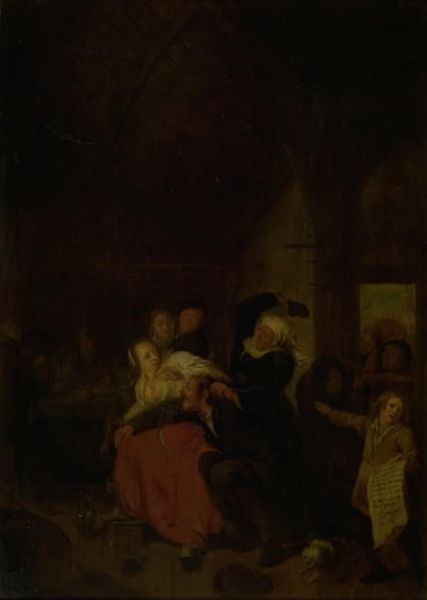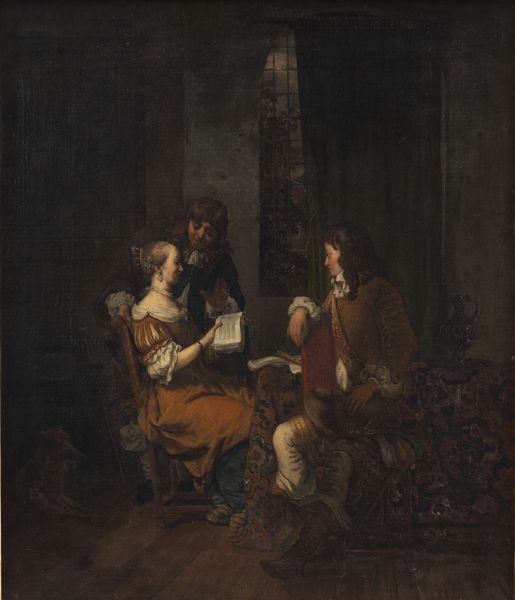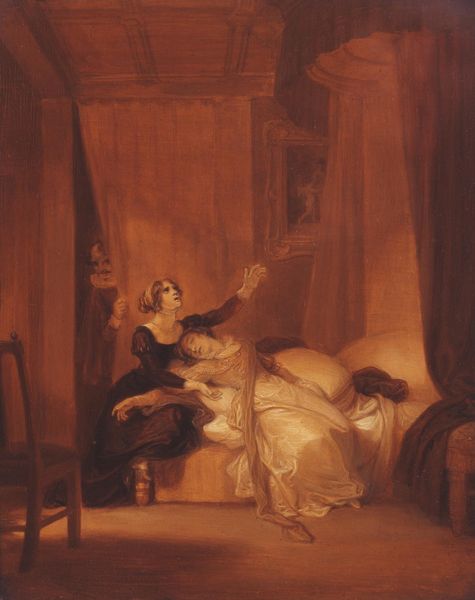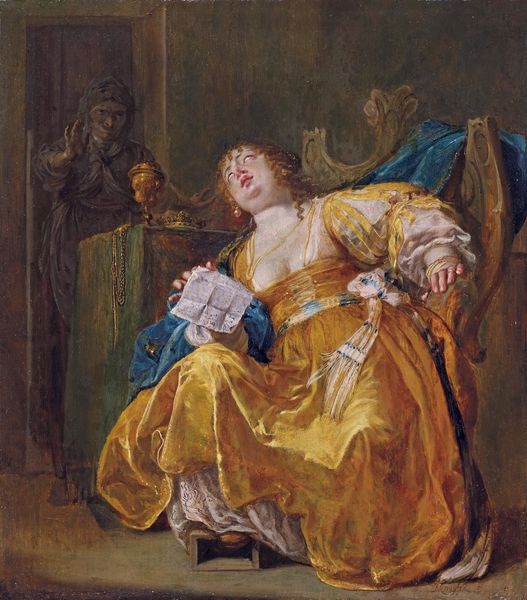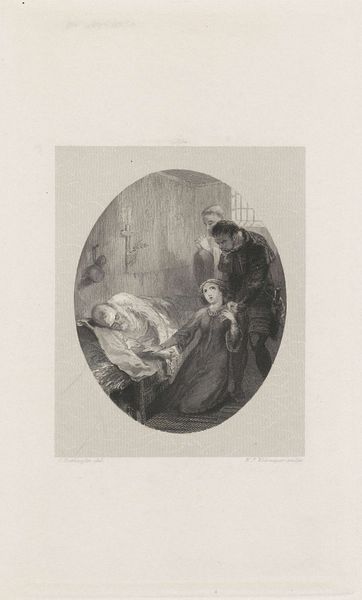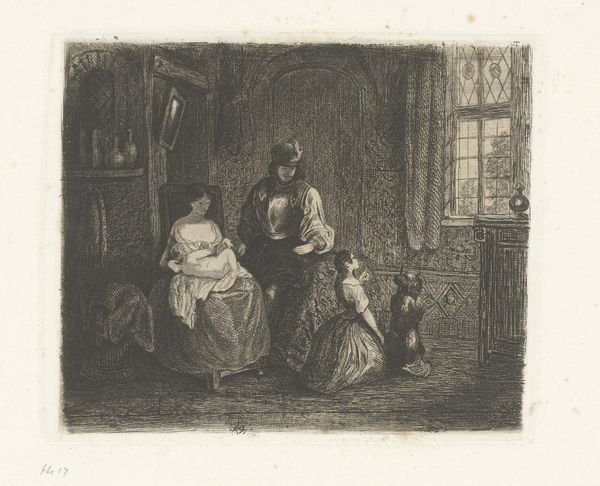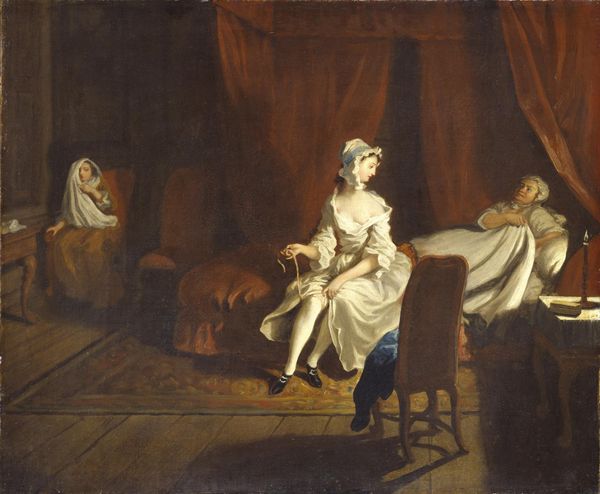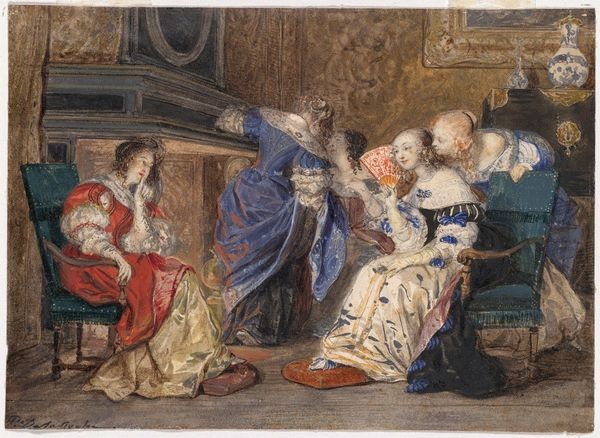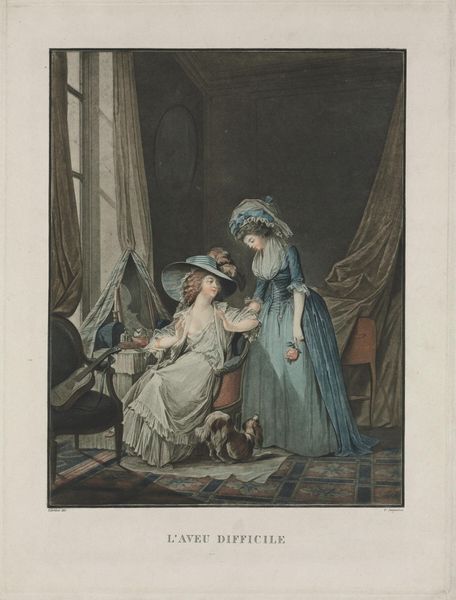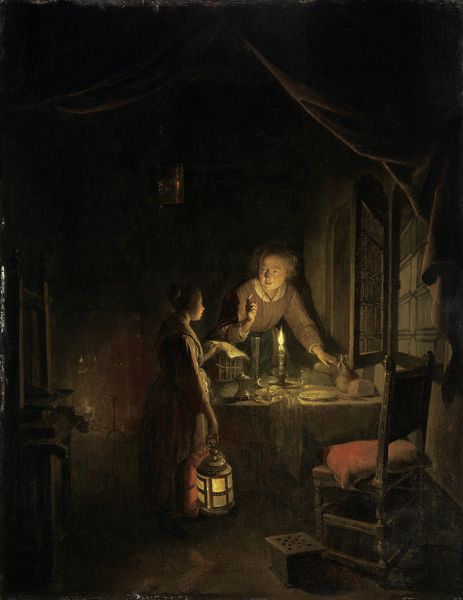
painting, oil-paint
#
portrait
#
painting
#
oil-paint
#
charcoal drawing
#
oil painting
#
romanticism
#
genre-painting
#
history-painting
Dimensions: 34.5 x 45.7 cm
Copyright: Public domain
Editor: Here we have Bonington's "Francis I and Marguerite de Navarre," painted around 1826, using oil paints. There's something melancholic about this historical painting, particularly in its dimly lit setting and the subjects' detached expressions. How do you interpret this work, especially concerning its production? Curator: Looking through a materialist lens, it's important to understand *how* Bonington achieved this melancholic effect. Oil paint, of course, allowed for the build-up of layers and glazing to create depth and luminosity, yet the visible brushstrokes disrupt any illusion. Instead, the production of meaning becomes very apparent. Consider how pigments available at the time influenced his color palette. The darker tones—common with available pigments and binders—are laid on thickly, adding a heaviness to the scene. What statement is Bonington trying to make by drawing the viewer's eye towards these material realities, instead of the perfect illustration? Editor: I hadn't thought about the availability of pigments. So, the deliberate emphasis on materiality... Curator: Exactly. Is this Bonington using readily available, maybe even cheaper materials, to mass-produce an evocative history scene for public consumption? Where does this put his own artistic labor in relation to the nobility depicted, especially considering France was experiencing dramatic shifts in the balance between craft and industry? Do the blurred lines hint at Romantic notions of historical ‘authenticity’ and ‘aura’ even when industrially mass-produced? Editor: So, it's not just about what is depicted but also about the economic and production conditions surrounding its creation. The visible brushstrokes aren’t a flaw but an assertion! I find myself considering Romanticism through the lens of capitalist realism; thank you! Curator: Indeed! Looking closely at materials allows us to trace the often complex and obscured web of art’s production and consumption.
Comments
No comments
Be the first to comment and join the conversation on the ultimate creative platform.
